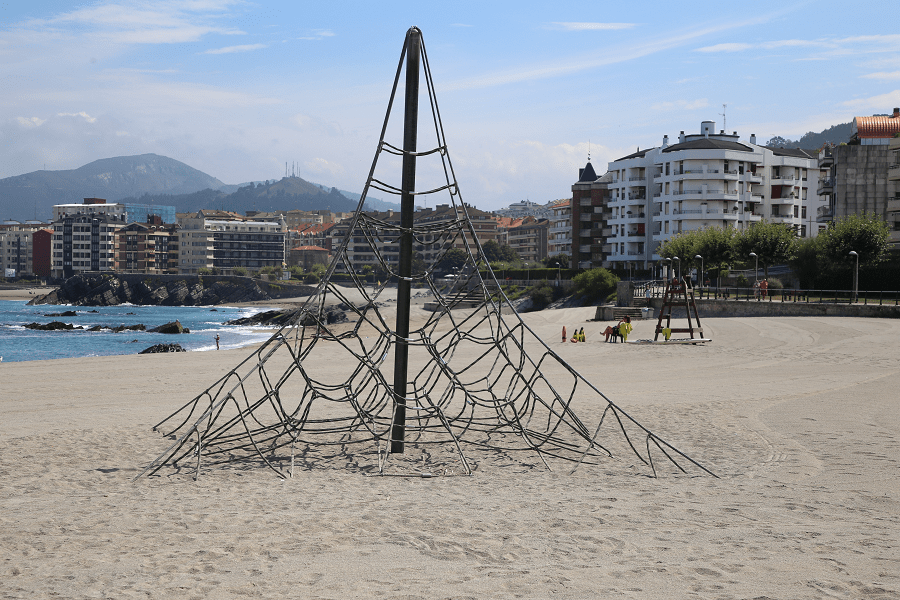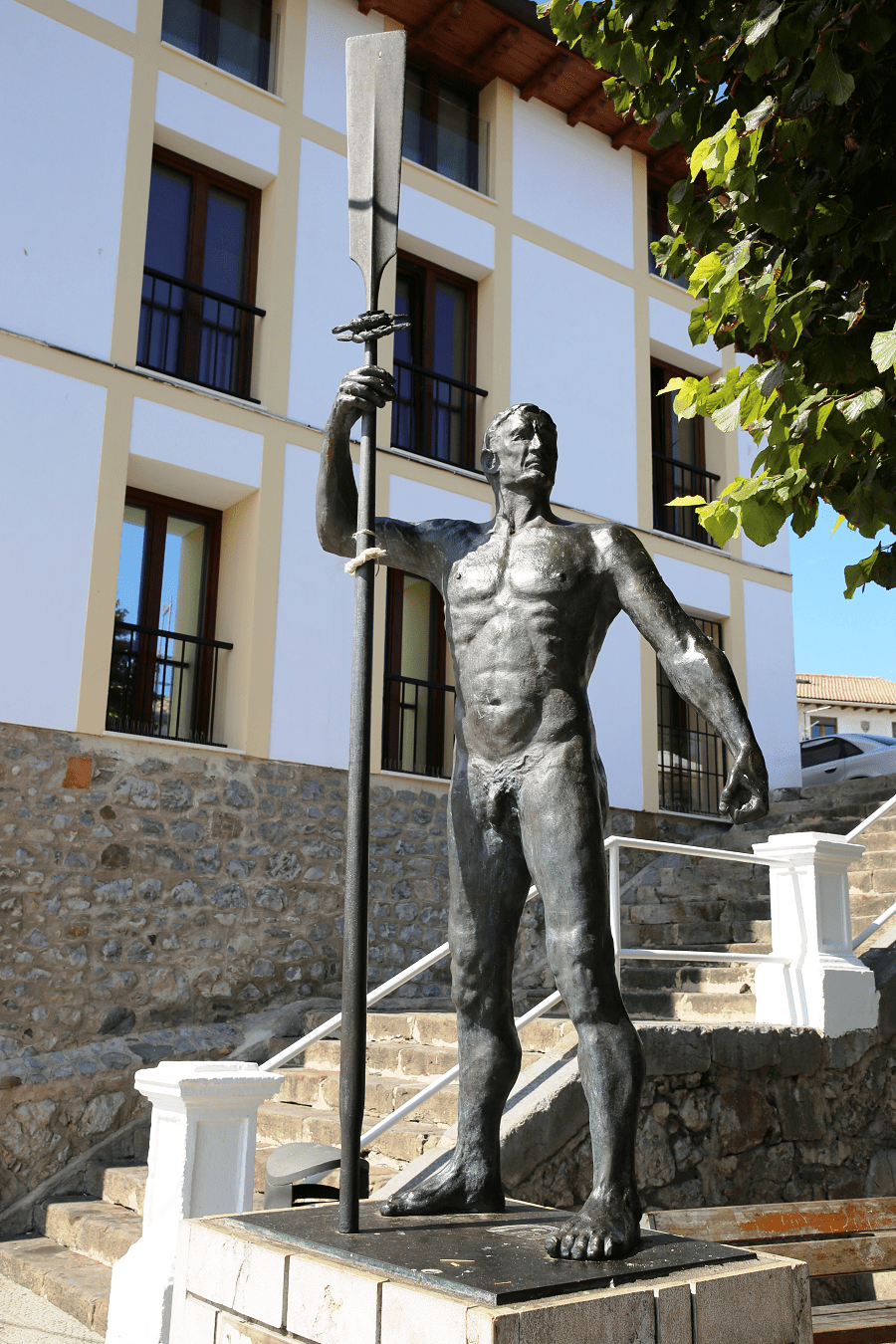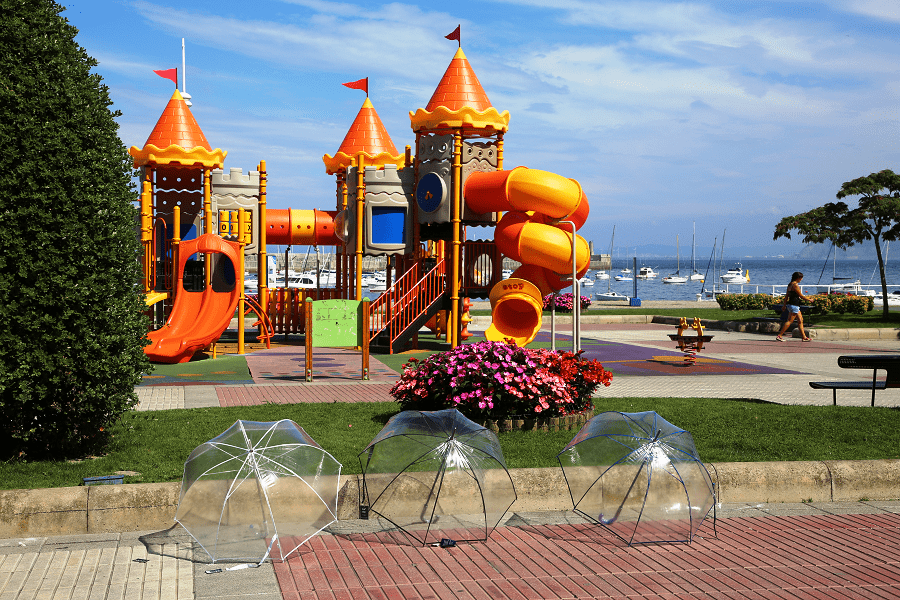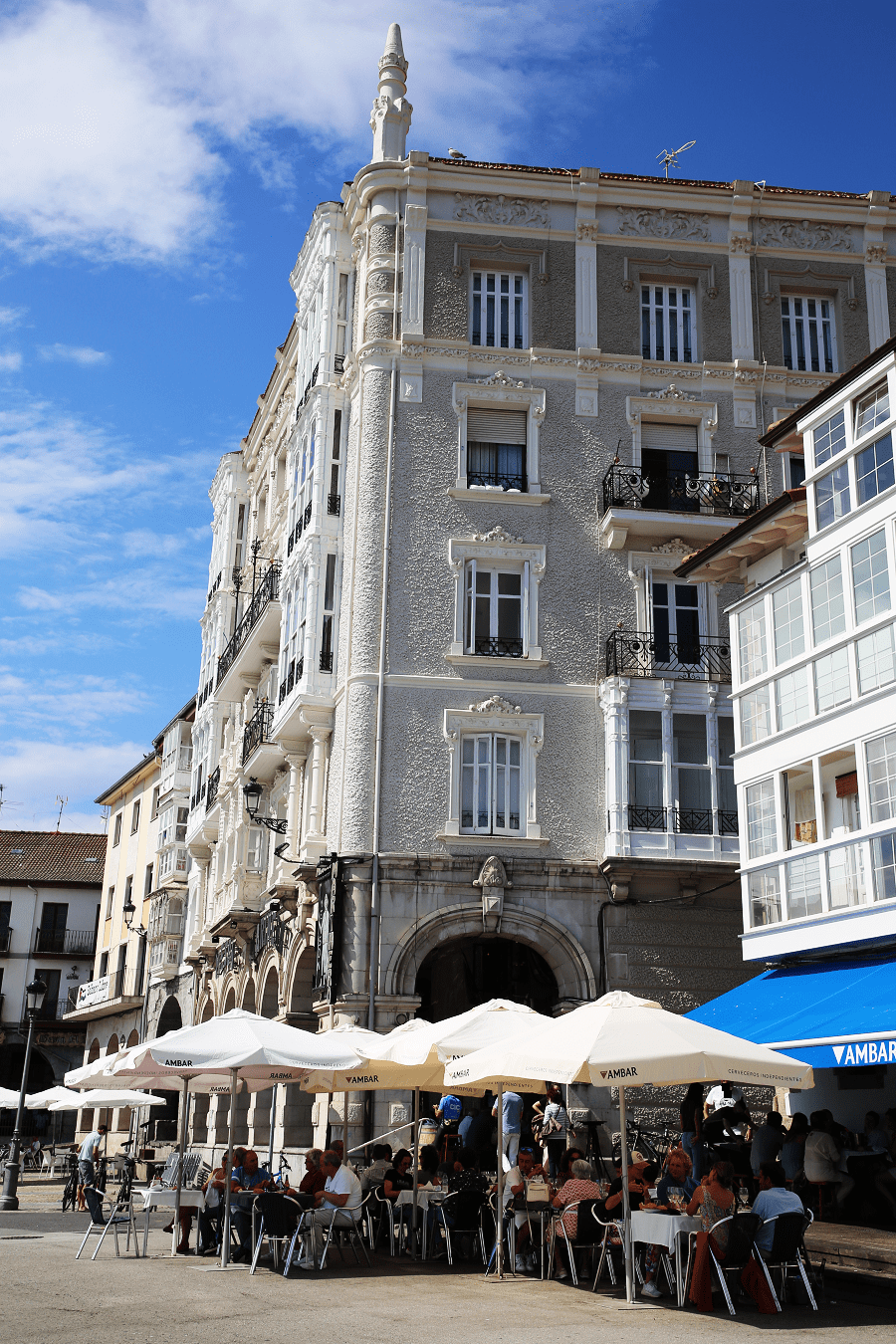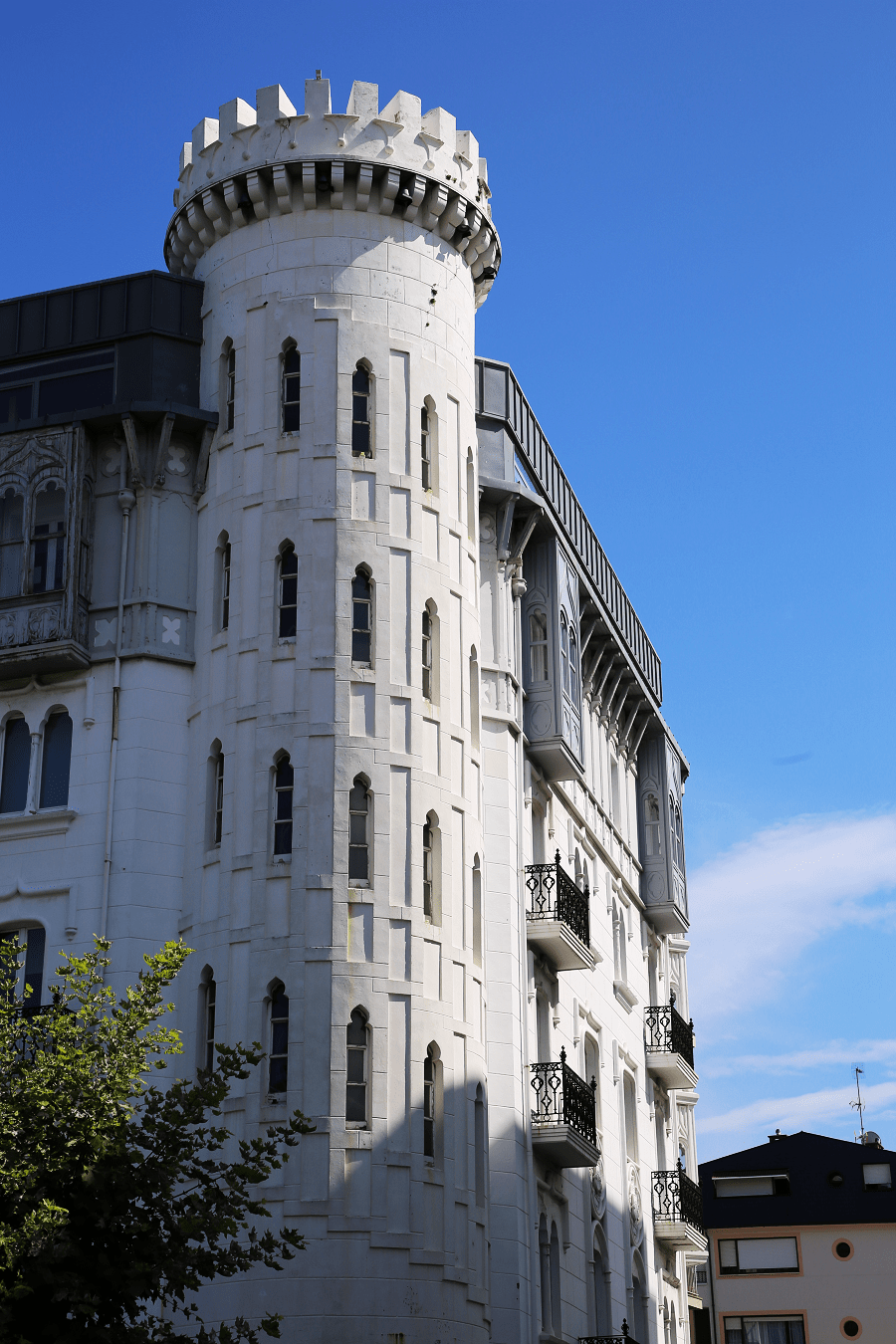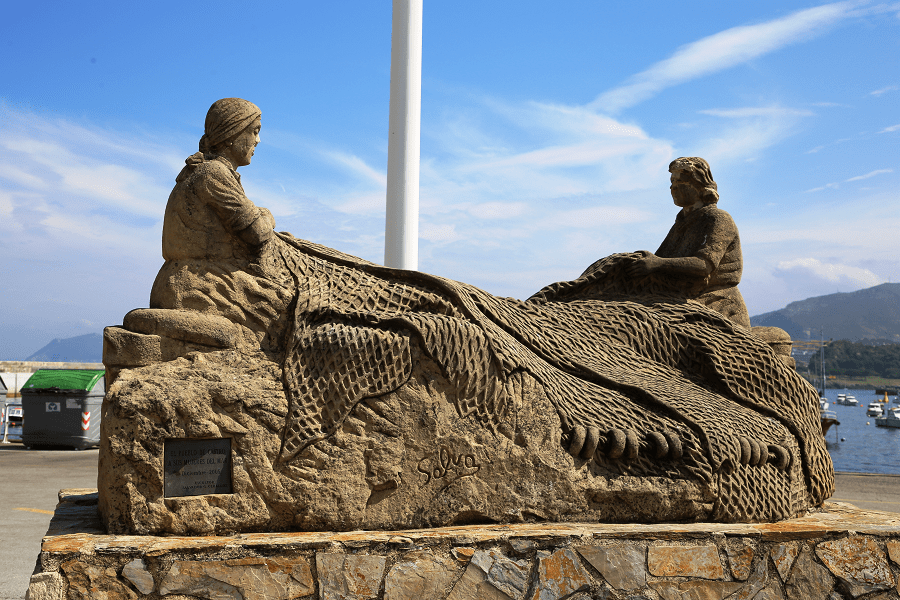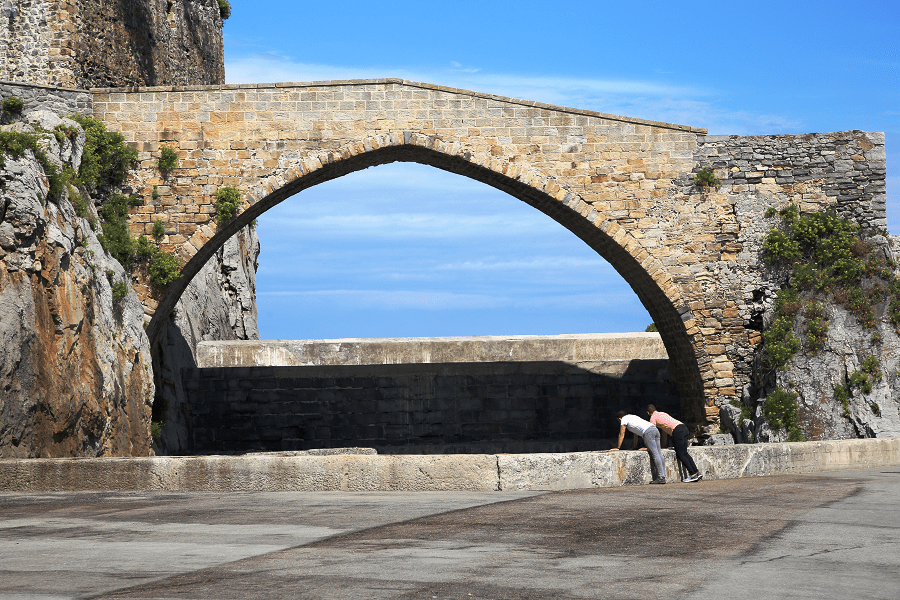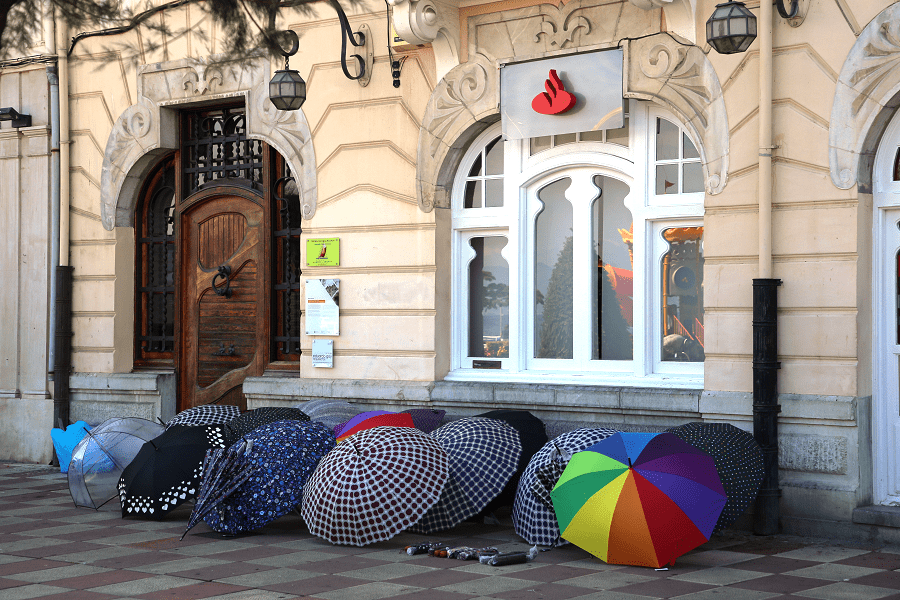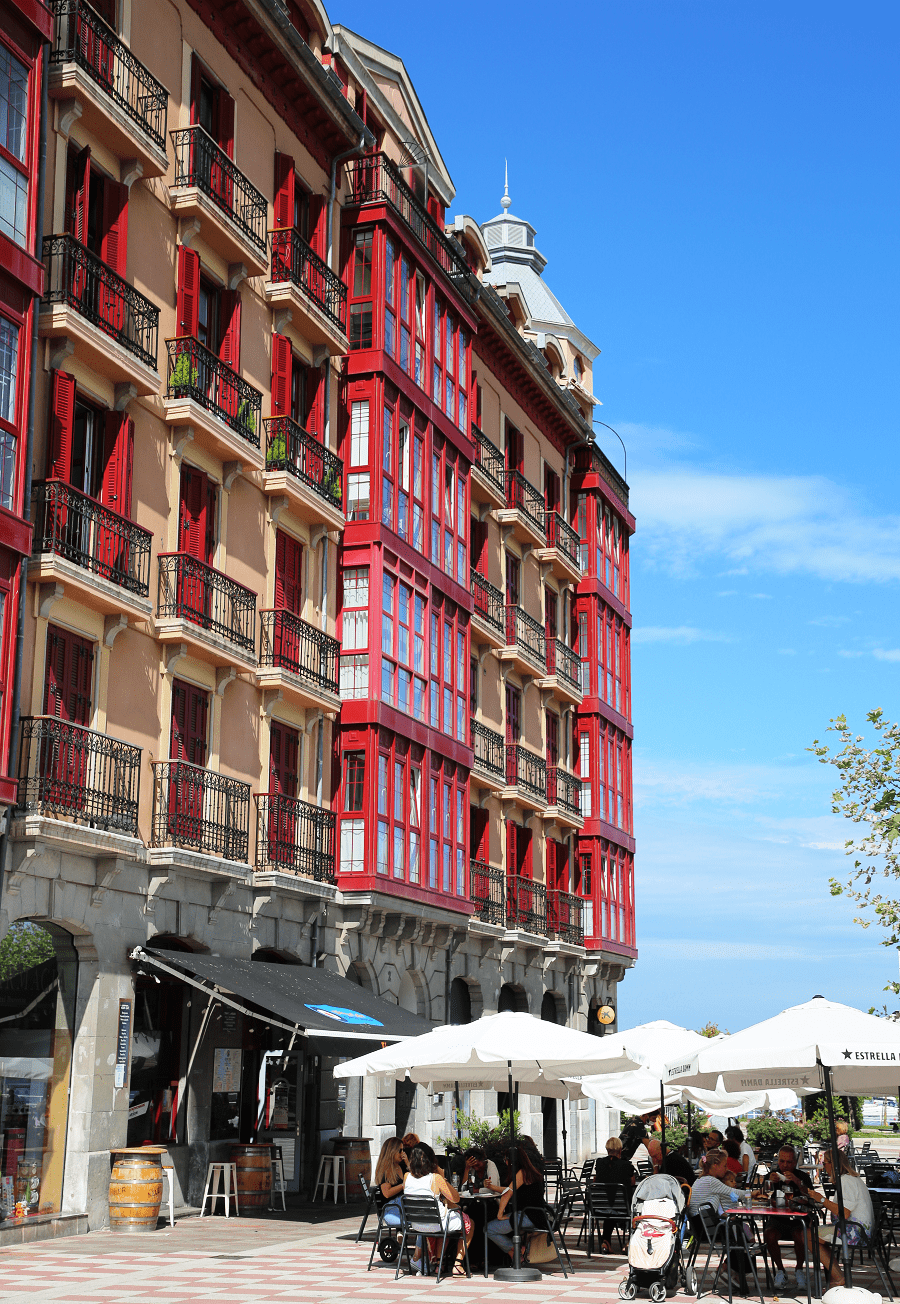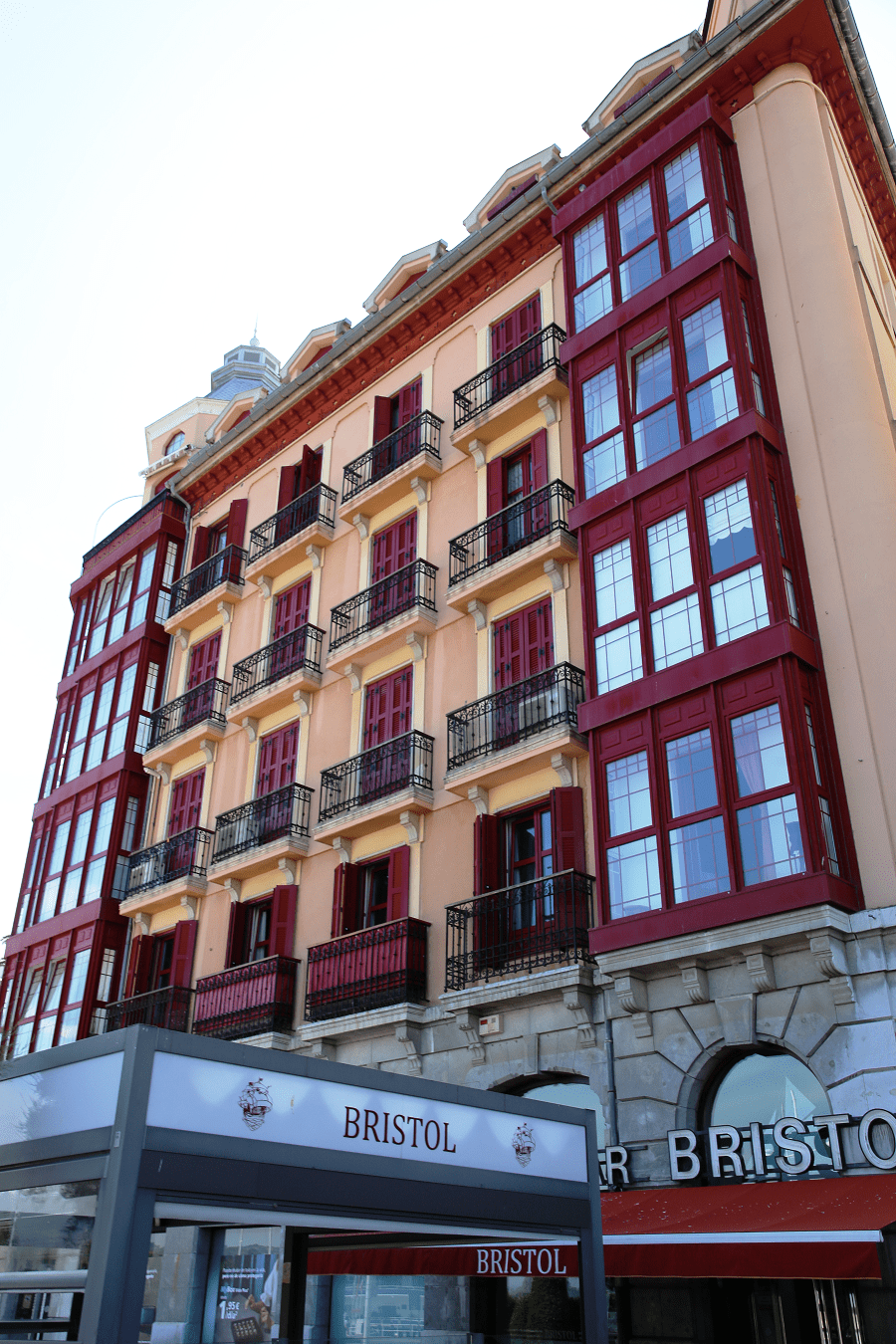Castro-Urdiales, or simply Castro, is a city and coastal municipality located in northern Spain, in the autonomous community of Cantabria.
It is one of the most populated coastal municipalities on the Cantabrian coast; in Cantabria only Santander and Torrelavega have more population.
The city is a popular part of the Costa Cantabria of the Atlantic resorts of Spain.
Tourism and main attractions
The monumental complex of Castro-Urdiales, also known as Puebla Vieja, has medieval origins and is located by the sea. It was declared a Historic-Artistic Site in 1978 due to its rich heritage, which is made up of various monuments.
The church of Santa María de la Asunción, known locally as the cathedral of Santa María (although it is not a cathedral), is a Gothic-style Catholic temple built between the XIII and XV that is located in front of the Cantabrian Sea, next to the castle-lighthouse and next to the city’s fishing port.
In 2015, on the approval by Unesco of the extension of the Camino de Santiago the church was included in the Northern Way.
It was built at the beginning of the 13th century, under the protection of King Alfonso VIII of Castile, its work lasted until the 15th century. It corresponds to a period of great economic prosperity as a Castilian port for trade with France, England and the Netherlands, especially since 1296 when Castro-Urdiales holds the direction of the Cantabrian ports.
Currently, it is considered a BIC (Cultural Interest). It was also declared a Historic-Artistic Monument belonging to the National Artistic Treasure by decree of June 3, 1931.
The castle of Santa Ana is a fortress located on a rocky promontory near the church Sta. Mª de la Asunción (13th century), the ruins of another previous church (that of San Pedro, from the 12th century), and the hermitage of Santa Ana, built as a watchtower, linked to the castle by a bridge. The complex has very good views of the sea, the port and the town. Inside the enclosure a lighthouse was built in 1853, whose machinery occupied the chapel. It is one of the best preserved castles in northern Spain.
It has a pentagonal floor plan with cylindrical corner towers 15 meters high, which protect a rectangular enclosure measuring 22.75 x 12.35 meters; inside this, in turn, there is a hall of 17 x 7 m covered by a barrel vault. The castle, as well as the citadel, was protected by a wall between 6 and 7 meters high, which preserves a small, very deteriorated canvas with the original battlements and merlons.
Access is located on the sea side, through a small door.
It is not known for sure when the castle was founded, speculating that the beginning of the works could coincide with the foundation of the town; however, the founding letter has not reached us. A defensive structure probably existed even earlier.
Construction of the current building began in the 12th century, undergoing various modifications and additions and being abandoned in the 16th century.
During a restoration in the 20th century, the lighthouse keeper’s house, built inside the enclosure, was demolished. Together with the entire Puebla Vieja de Castro-Urdiales, it was declared a historic-artistic complex in (1978).
Other interesting places:
Palace, castle-observatory and gardens of the Ocharan, protected since 1985. The castle-observatory dates from 1914, is the work of the architect from Eladio Laredo, is neo-Gothic in style and is located on Leonardo Rucabado street. The Ocharan Palace or Toki-Eder was built in 1901 also by the architect Eladio Laredo. It is an eclectic-style building: it has a portico with columns and other elements of Greek taste, and a frieze of multicolored tiles designed by Daniel Zuloaga.
House “Sotileza” (known as Chalet “Sotileza”), is currently rehabilitated for housing. Made by Leonardo Rucabado, it is located at the beginning of Brazomar beach.
House “Isidra del Cerro”.
House de los Shilines, protected since 1991. Designed by Severino Achucarro and built under the direction of Leonardo Rucabado at the beginning of the 20th century, it is a neo-Gothic style building located in the Plaza de España. It is currently privately owned and was declared an Asset of Cultural Interest in 1991.
Villa of the San Martin.
Pedro Velarde Residence.
Ballena Municipal Cemetery.
Mineral loading dock, in Mioño.
Ruins of the medieval tower of the Templars, in Allendelagua, on the slope of a mountain. The tower belonged to the Order of the Templars and is currently in a poor state of conservation.
Beaches
Brazomar Beach. Length: 300 meters. Width: 40 meters. Environment: Urban. Composition: Sand. Services: Toilets, Feet shower, Showers, Litter bins, Cleaning service, Food, Drinks.
Ostende / Urdiales Beach. Blue flag. Length: 800 meters. Width: 50 meters. Environment: Urban. Composition: Sand. Swimming conditions: Moderate waves. Services: Toilets, Feet shower, Showers, Litter bins, Cleaning service, Food, Drinks.
Oriñón Beach. Blue flag. Length: 1100 meters. Width: 100 meters. Environment: Urban. Composition: Sand. Swimming conditions: Moderate waves, Windy. Services: Toilets, Feet shower, Showers, Litter bins, Cleaning service.
Festivals
Good Friday Festival: celebrated on Good Friday, the festival consists of the representation of the Living Passion, an event that has been celebrated since 1984 and that takes place through the streets of the old town.
Festivity of San Juan: it is celebrated on June 24, which is when the Big Week of Festivities begins in Castro-Urdiales, with a traditional sardine in La Atalaya.
Festivity of San Pelayo Mártir: San Pelayo Mártir is the patron saint of Castro-Urdiales, it is celebrated on June 26, and the most important moment of the day is the pilgrimage that is celebrated in La Atalaya.
Festivity of the Coso Blanco: it is celebrated on the first Friday of the month of July, and it is a festival of color and music. It is perhaps the most popular festival in the city and is considered of National Tourist Interest.
Festivity of the Virgen del Carmen: it is celebrated on July 16 and it is a maritime festival, where the bay is the center of attention since in it you can see a spectacle of color with all the boats decorated and ready to accompany the Virgin del Carmen.
Festivity of Santa Ana: it is celebrated on July 26 in the hermitage dedicated to her name, located in the historic complex and where a Eucharist is celebrated.
Festivities of Santa María de la Asunción: she is the patron saint of Castro-Urdiales, it is celebrated on August 14 and San Roque is also commemorated.
Festivity of San Andrés Apóstol: it is celebrated on November 30 and it is, together with the Coso Blanco, one of the most popular and characteristic festivals of the city.
How to get to?
Nearest airports are in Santander and Bilbao.
From Santander 50 min (69.3 km) via A-8
From Bilbao 28 min (31.6 km) via A-8
From Madrid 4 hr 23 min (433 km) via A-1
Main information
Area: 96 km²
Coordinates: 43°23′04″N 3°12′54″W
Population: 32 975
Languages: Spanish
Currency: Euro
Visa: Schengen
Time: Central European UTC +1
See here best sea and ocean resorts of France and Spain (223 objects)




